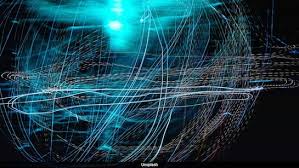Supersolid : Study

Researchers have successfully turned light into a “supersolid” for the first time ever.
- Supersolids are a strange state of matter defined by quantum mechanics where particles condense into an orderly, crystalline solid but also move like a liquid that has no viscosity.
- Usually, solids don’t move on their own, but supersolids change direction and density depending on particle interactions while maintaining an organized lattice structure.
- Supersolids require extremely low temperatures to form — usually very close to absolute zero (minus 459.67 degrees Fahrenheit, or minus 273.15 degrees Celsius).
- Most of the particles have to occupy the lowest energy state available, and heat makes particles jump up and down like excitable toddlers in a ball pit.
- If a material is cold enough, the temperature no longer obscures how the particles interact with each other. Instead, the tiny effects of quantum mechanics become the defining factors in how the material behaves.
- Supersolids have traditionally been observed in Bose-Einstein condensates (BECs) of ultracold atoms near absolute zero.
- However, this new development expands the scope by coupling light and matter, enabling researchers to study condensed-matter physics under extreme quantum conditions.
- The discovery has profound implications for quantum computing, where supersolid-based systems could enhance qubit stability.
- It also opens pathways for advancements in optical circuits, photonic devices, and fundamental physics research.




